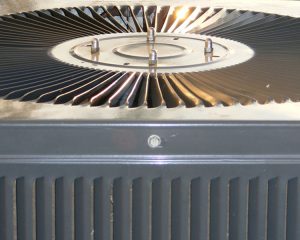
One of the major components of a home is the HVAC system. Having an HVAC inspection done prior to buying a home will help identify a possible failure prior to purchase.
Have you ever woken up in the middle of a winter night, shivering under the blankets and able to see your breath? Or have you ever watched the thermostat creep into the upper 80s during a record-setting heat wave, realizing you haven’t heard the air conditioner kick on? If so, your heating or cooling system was on the fritz—and (of course), it happened at the worst possible time. Components like fan motors, run capacitors, contactors, coils, compressors, low/high pressure switches and time delay programs are all wear and tear items subject to fail at any time.

These systems not only fail when you need them the most, but also during the hardest time of the year to get a heating, ventilation and air-conditioning (HVAC) contractor to come by for repairs. Naturally, technicians are at their busiest when these systems are busiest. So, unless you have a relative in the business, the best way to ensure your heating and cooling systems keep working is to maintain them properly.
To guard against a future breakdown, have a professional perform periodic maintenance on the systems before the peak seasons begin. Have the heating system serviced in late summer or early fall, and keep in mind that priority scheduling for repeat customers may begin mid-summer. For a central air-conditioning system, arrange to have a pro check it out in the early spring, after temperatures have reached 65° F, depending on when it starts getting hot in your region.
A typical maintenance call will involve tightening electrical connections, checking the condition of hoses and belts, lubricating all moving parts, and making sure the controls work properly.
For cooling components, the contractor will clean the evaporator coils that remove the heat from the air in your home, as well as the condenser coils that release the collected heat to the outside air. Your tech will also check the fan components, make sure the refrigerant level in the system is correct, inspect ductwork and gas lines, and check for leaks.
For heating systems, technicians typically check fuel connections, change the filters, and inspect the system’s combustion and heat exchangers.
What You Can Do
Here are a few maintenance tasks you can perform yourself:
- For ongoing maintenance, change the filters every three months for a forced-air system that includes both heating and cooling. If the systems are separate, change the filters every three months during the heating or cooling season. The type of filter to use and directions for changing it can be found in the manual that comes with installation. Instructions may also come with the filter, or on a label affixed to the HVAC unit. You an also ask an HVAC contractor for advice, or visit the manufacturer’s website to see if information is available online.
- Check around the house to make sure all heating and cooling vents, baseboard heaters, and radiators are not blocked by furniture. If they are blocked, the system has to work harder to provide you with the comfort you want, placing a strain on the system.
- Air-conditioning systems often have an outdoor component that houses the compressor and condenser. This part of the system dumps hot air from your house to the outside as part of the cooling cycle. Remove leaves and other debris off of the top of the unit, and maintain a clearance of 2 to 3 feet around it.
Repair vs. Replace
If your HVAC system does break down, you will be faced with the decision of whether to repair or replace it. Repairs are less expensive, but there are a number of reasons to consider replacing the entire unit.
- The system is eight to 15 years old. While a properly maintained system can last longer than 15 years, some older equipment is not as efficient as those available today. And with the average household spending almost half its energy budget on heating and cooling costs, it makes sense to install an energy-efficient system. For example, the annual fuel utilization efficiency (AFUE) rating measures how much fuel a furnace or boiler converts to heat and how much is wasted. It is not unusual to find old furnaces with an AFUE below 70%, which means that over 30% of the fuel is wasted. High-efficiency furnaces available today can achieve AFUE ratings above 98%. That could mean a reduction in heating bills of 20 to 30%. Likewise, the seasonal energy-efficiency ratio (SEER) can be as low as 8 to 10 SEER in older units, while newer units often boast up to 25 SEER, translating to a reduction of up to 50% of cooling costs.
- The system needs to be repaired frequently. Even if the repairs are minor, having an HVAC contractor on speed dial does not bode well for the future. If you are faced with a major repair—such as a compressor for an air conditioner, or a blower motor for a furnace—and you have had to pay for a similar repair recently, it is time to replace the unit.
- Energy bills keep going up and the house is too hot or too cold. There could be a number of reasons for this, such as leaky ducts, or a lack of insulation and weather sealing in the walls and ceiling. However, it could also mean that the current system is not the right size for the house. A properly sized system would solve that problem quickly.
When faced with a large repair, discuss your options with a qualified HVAC contractor. If you choose a replacement, make sure you hire a reputable, licensed and insured contractor associated with a company you can trust, and confirm that you have a sufficient warranty to insure you against installation and mechanical errors. And after the repair or replacement, keep it well maintained.
